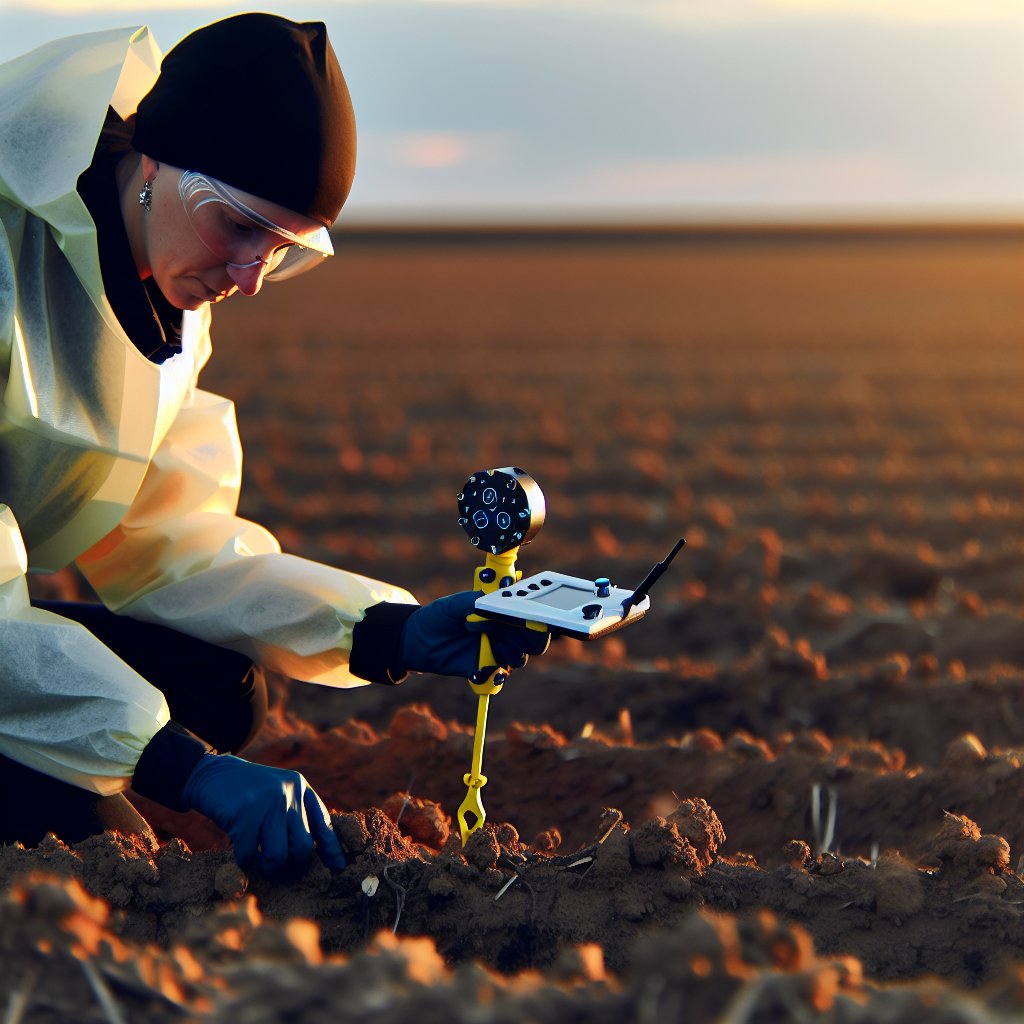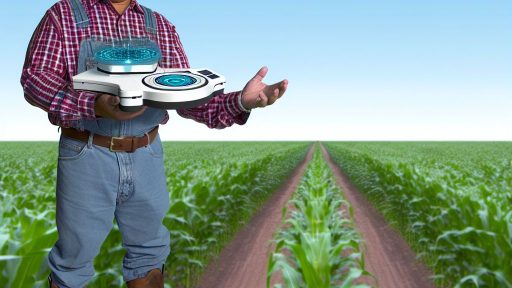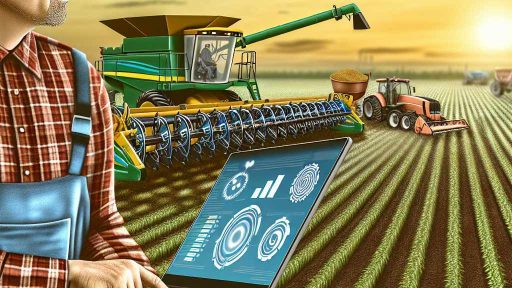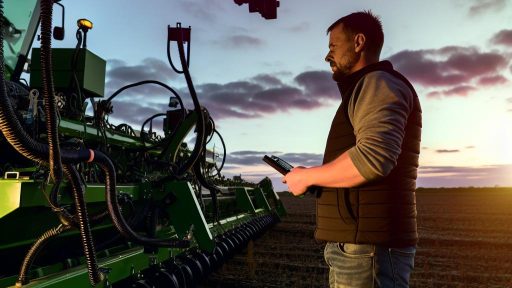Introduction to Soil Health and Its Importance in Agriculture
Soil health significantly impacts agricultural productivity.
Healthy soil supports plant growth and crop yields.
It provides essential nutrients and retains water effectively.
Moreover, it serves as a habitat for beneficial microorganisms.
These organisms enhance nutrient availability and promote fertility.
Understanding Soil Composition
Soil comprises minerals, organic matter, water, and air.
This composition determines its fertility and productivity.
For instance, sandy soils drain well but may lack nutrients.
Conversely, clay soils hold water but can become compacted.
Both types require careful management to maintain health.
The Role of Microorganisms
Microorganisms play a crucial role in soil health.
They decompose organic matter, releasing nutrients back into the soil.
This process contributes to soil fertility and structure.
Additionally, some microorganisms help suppress plant diseases.
Thus, promoting a diverse microbial community enhances soil resilience.
Transform Your Agribusiness
Unlock your farm's potential with expert advice tailored to your needs. Get actionable steps that drive real results.
Get StartedImpact of Soil Erosion
Soil erosion poses a significant threat to agriculture.
It removes the topsoil layer, which is rich in nutrients.
In turn, this can lead to decreased crop yields.
Furthermore, erosion contributes to water quality issues.
Preventive measures are essential to protect soil integrity.
Benefits of Healthy Soil
Healthy soil improves agricultural sustainability.
It enhances crop resilience to diseases and pests.
Additionally, it increases water infiltration and retention.
This leads to reduced irrigation needs and less water waste.
Ultimately, healthy soil fosters a sustainable agricultural ecosystem.
Overview of IoT Technology in Agriculture
Introduction to IoT
IoT stands for the Internet of Things, a technology transforming various sectors.
In agriculture, IoT enables smart farming practices through interconnected devices.
Farmers can monitor and manage crops and soil conditions in real-time.
Benefits of IoT in Agriculture
IoT offers numerous benefits for improving agricultural efficiency.
First, it enhances decision-making through accurate data collection.
Furthermore, it reduces resource waste by optimizing inputs like water and fertilizers.
This technology also ensures timely interventions in crop management.
Key Components of IoT Systems
IoT systems consist of various components that work together seamlessly.
Sensors collect data on soil moisture, temperature, and nutrient levels.
These devices transmit data to cloud-based platforms for analysis.
Agricultural managers can then access this information via dashboards.
Real-World Applications of IoT
Many farms are adopting IoT solutions to improve productivity.
For instance, precision agriculture relies heavily on IoT technology.
Additionally, IoT enables remote monitoring of livestock and crops.
Showcase Your Farming Business
Publish your professional farming services profile on our blog for a one-time fee of $200 and reach a dedicated audience of farmers and agribusiness owners.
Publish Your ProfileMoreover, it supports automated systems for irrigation and fertilization.
Future Prospects of IoT in Farming
The future of IoT in agriculture looks promising with emerging technologies.
Advancements in artificial intelligence will enhance data analysis capabilities.
Moreover, the integration of drones with IoT presents new opportunities.
Farmers will continue to leverage IoT for sustainable farming practices.
Types of IoT-Based Monitoring Tools for Soil Health
Soil Moisture Sensors
Soil moisture sensors are essential for assessing soil hydration levels.
These devices provide real-time data on moisture content.
Farmers can optimize irrigation schedules effectively.
Additionally, they prevent overwatering and promote resource conservation.
Nutrient Monitoring Systems
Nutrient monitoring systems analyze soil chemical composition.
They help determine the levels of key nutrients like nitrogen and phosphorus.
This information is critical for enhancing soil fertility.
Farmers can adjust fertilization practices based on precise data.
Temperature Sensors
Temperature sensors monitor soil temperature fluctuations.
These fluctuations significantly affect plant growth and health.
Knowing the temperature helps in selecting suitable crop varieties.
Also, it aids in planning planting and harvesting schedules.
pH Sensors
pH sensors measure the acidity or alkalinity of soil.
This balance impacts nutrient availability and microbial activity.
Maintaining optimal pH levels is crucial for plant growth.
Farmers can apply amendments to correct pH levels effectively.
Integrated IoT Platforms
Integrated IoT platforms combine data from various sensors.
This provides a comprehensive view of soil health.
Farmers can analyze data from multiple sources easily.
Such platforms facilitate data-driven decision-making.
Remote Sensing Technologies
Remote sensing technologies use drones and satellites for soil analysis.
These technologies allow for large-scale monitoring of agricultural land.
They deliver insights into soil health over substantial areas.
Farmers can identify problematic areas and strategies for improvement.
Discover More: IoT Security Considerations for Agricultural Systems
Benefits of IoT Tools for Real-Time Soil Analysis and Data Collection
Improved Soil Monitoring
IoT tools provide continuous soil monitoring for farmers.
This technology collects critical data on soil moisture, temperature, and nutrient levels.
Consequently, farmers can make informed decisions about irrigation and fertilization.
Enhanced Data Accuracy
Remote sensors deliver precise readings from diverse soil locations.
This data eliminates human errors common in traditional soil testing methods.
As a result, agricultural practices become more reliable and efficient.
Timely Decision Making
Real-time data enables rapid responses to changing soil conditions.
Farmers can adjust practices based on immediate information like moisture levels.
This swift adaptation helps optimize crop yields and minimize losses.
Cost Reduction
Implementing IoT solutions can significantly reduce operational costs.
Showcase Your Farming Business
Publish your professional farming services profile on our blog for a one-time fee of $200 and reach a dedicated audience of farmers and agribusiness owners.
Publish Your ProfileFor example, accurate moisture readings help cut water usage.
This efficiency leads to savings in both water and energy expenses.
Environmental Sustainability
By using IoT tools, farmers can adopt more sustainable practices.
For instance, precise nutrient application reduces the risk of runoff.
This practice protects local waterways from agricultural pollutants.
Integration with Other Farming Technologies
IoT systems can easily integrate with existing farm management software.
This integration provides a holistic view of farm operations.
Thus, farmers can leverage multiple technologies to enhance productivity.
Historical Data Tracking
IoT devices enable the collection of long-term soil data.
Farmers can analyze trends over time to improve crop management strategies.
This historical insight fosters better future planning.
Scalability
IoT tools can scale with the growth of farming operations.
These technologies support both small and large farms equally.
Consequently, this flexibility makes them suitable for various agricultural needs.
You Might Also Like: Renewable Energy Solutions Transforming Modern Agricultural Operations
Case Studies: Successful Implementation of IoT Monitoring for Soil Health
The Farm Fresh Initiative
The Farm Fresh Initiative adopted IoT technology to enhance soil monitoring.
This project utilized soil moisture sensors across vast fields.
They recorded moisture levels in real-time.
Consequently, farmers adjusted irrigation schedules effectively.
This reduced water wastage and optimized crop yields.
AgriTech Solutions
AgriTech Solutions integrated smart sensors into their operations.
They monitored nutrient levels in the soil continuously.
By analyzing data, they provided precise recommendations to farmers.
As a result, crops showed improved health and productivity.
Farmers reported a significant increase in profits due to better yields.
Green Earth Farms
Green Earth Farms turned to IoT to combat soil degradation.
They installed a network of sensors to track pH levels.
This enabled them to apply the right fertilizers at the right time.
Furthermore, they learned to adjust crop rotations based on soil data.
The outcome was healthier soils and increased biodiversity.
Data-Driven Decisions
These case studies highlight the power of data in agriculture.
IoT tools allow farmers to make informed decisions easily.
They improve soil health and boost overall productivity.
As technology advances, more farmers will likely adopt these practices.
The future of agriculture looks promising with IoT implementation.
Find Out More: Exploring Controlled Environment Agriculture Technologies for Farmers

Challenges and Limitations of Using IoT in Soil Monitoring
Data Integrity and Reliability
The reliability of IoT devices remains a primary concern.
Many sensors can malfunction or provide inaccurate data.
This issue leads to incorrect assessments of soil health.
Additionally, environmental factors can affect sensor performance.
Showcase Your Farming Business
Publish your professional farming services profile on our blog for a one-time fee of $200 and reach a dedicated audience of farmers and agribusiness owners.
Publish Your ProfilePoor connectivity may further exacerbate data transmission problems.
Initial Setup and Costs
The initial investment for IoT systems can be significant.
Farmers may find it challenging to budget for these technologies.
Moreover, ongoing maintenance costs can also add up over time.
Some small-scale farmers might feel excluded from these advancements.
Technical Skills and User Awareness
Farmers often require training to effectively use IoT tools.
There is a learning curve associated with new technologies.
Furthermore, not all farmers are tech-savvy or have access to help.
This lack of expertise can hinder the benefits of IoT.
Data Security and Privacy Concerns
Utilizing IoT devices raises important security issues.
Cyber attacks can compromise sensitive agricultural data.
Farmers must implement measures to protect their information.
Concerns about data privacy also hinder widespread adoption.
Interoperability Issues
Integration of different IoT systems presents challenges.
Many devices may use varying communication protocols.
This fragmentation can lead to compatibility problems.
Farmers may struggle to consolidate data from multiple sources.
Environmental Impact
The production of IoT devices contributes to electronic waste.
Furthermore, the environmental footprint of manufacturing can be significant.
Farmers should consider these aspects when adopting IoT solutions.
Find Out More: AI-Based Soil Health Analysis Tools
Future Trends in Soil Health Monitoring with IoT Technology
Advancements in Sensor Technology
New sensors are becoming more sensitive and accurate.
These advancements allow for real-time monitoring of soil conditions.
Sensors can measure moisture, pH levels, and nutrient content.
Consequently, farmers can make better decisions based on precise data.
Integration with Data Analytics
IoT technology now integrates with advanced data analytics.
This integration helps in processing large volumes of data.
Farmers can use analytics to predict soil health trends.
As a result, they can implement proactive soil management strategies.
Improved Connectivity and Accessibility
IoT devices are becoming more connected and accessible.
Farmers can monitor soil health from mobile applications.
This ease of access enhances decision-making in real-time.
Additionally, remote monitoring reduces the need for physical inspections.
Focus on Sustainability
Future technologies emphasize sustainable farming practices.
IoT solutions promote the efficient use of resources.
This focus helps minimize chemical usage and improve soil biodiversity.
Moreover, sustainable practices contribute to long-term soil health.
Collaborations and Innovations
Collaborations among tech companies and farmers are increasing.
These partnerships drive innovations in soil health technology.
Additionally, pilot programs are testing new monitoring tools.
Showcase Your Farming Business
Publish your professional farming services profile on our blog for a one-time fee of $200 and reach a dedicated audience of farmers and agribusiness owners.
Publish Your ProfileSuch efforts aim to tailor solutions to specific agricultural needs.
Regulatory and Compliance Trends
Governments are introducing regulations for soil health monitoring.
IoT technology will play a key role in adhering to these regulations.
Farmers can use data to demonstrate compliance with environmental standards.
This shift enhances accountability and improves farming practices.
Best Practices for Integrating IoT Tools into Existing Agricultural Systems
Understanding Current Systems
Farmers must first assess their existing agricultural systems.
This evaluation identifies areas for improvement.
Understanding soil health parameters is crucial for effective monitoring.
Moreover, integrating IoT tools requires a clear overview of current practices.
Setting Clear Objectives
Establish specific goals for integrating IoT technology into agriculture.
These goals should align with overall farm management strategies.
Consider factors such as yield improvement and resource efficiency.
Additionally, set measurable metrics for success tracking.
Choosing the Right IoT Tools
Select IoT tools that suit the specific needs of your farm.
Options may include soil moisture sensors and weather stations.
Additionally, consider tools for pest and crop health monitoring.
Ensure compatibility with existing systems for seamless integration.
Training and Support
Provide training for staff on utilizing new IoT tools effectively.
Encourage ongoing learning and adaptations as technologies evolve.
Consider hiring experts for guidance during the initial setup phase.
Support from experienced users can greatly enhance productivity.
Data Management Strategies
Implement solid data management practices to handle information from IoT tools.
Ensure secure data storage and easy access for analysis.
Utilize cloud solutions to enhance scalability and flexibility.
Regularly back up data to prevent loss and maintain continuity.
Evaluating and Adjusting Practices
Regularly evaluate the effectiveness of IoT integration on farm performance.
Use the metrics established to measure progress toward goals.
Adjust strategies based on findings to improve outcomes continually.
Stay abreast of advancements in technology to incorporate updates when necessary.
Additional Resources
The Vital Role of Organic Matter in Agriculture: Boosting Crop …
Precision Agriculture: Benefits and Challenges for Technology …




